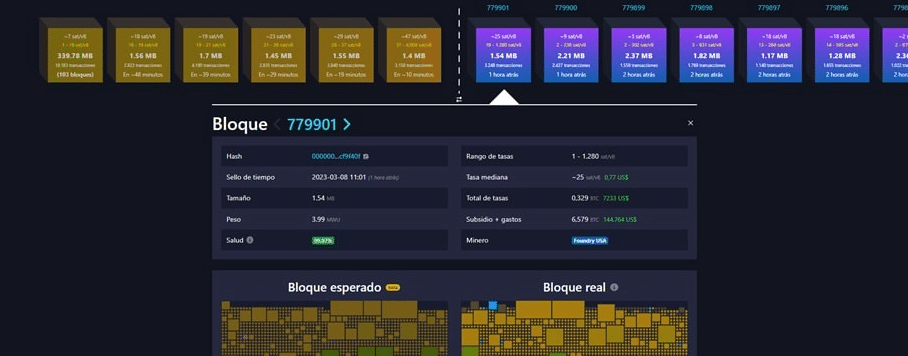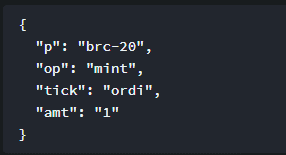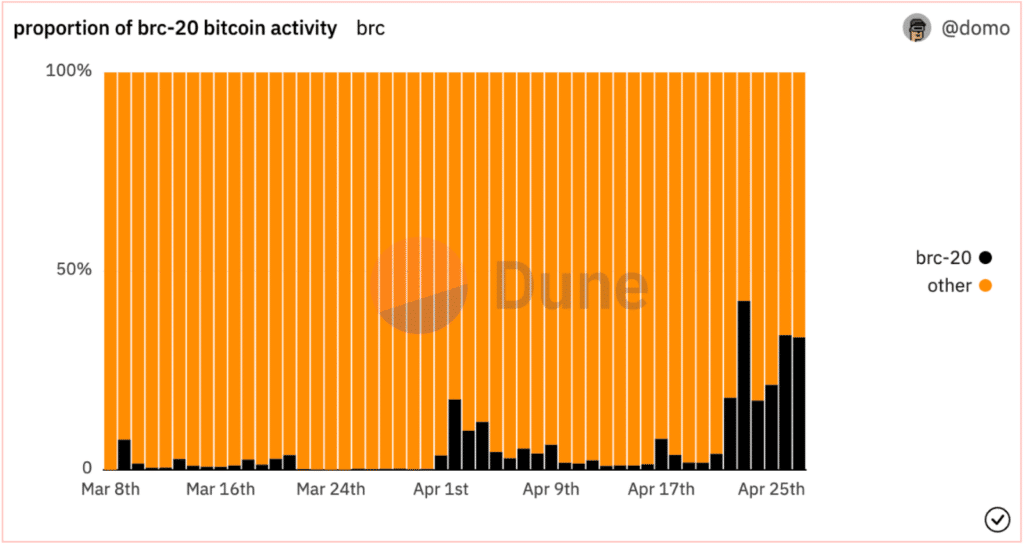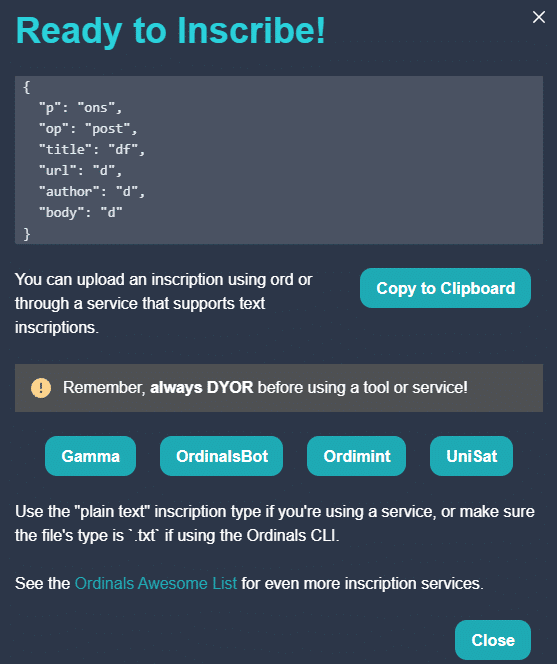Important facts:
-
Protocols such as BRC-20 and Ordinals News maximize the use of the network.
-
Commissions have multiplied by 20 this past week, with an unusual saturation.
The Bitcoin network is going through a critical moment and network fees have increased significantly over the past few days. Everything seems to indicate that thanks to the NFT records with ordinal numbers, Bitcoin will be used to store information as if it were a traditional database, increasing the flow of transactions and consequently commissions.
As recently reported by CriptoNoticias, Bitcoin has reached one maximum peak in the number of transactions unseen daily since 2019. More than 16,000 transactions are carried out every dayand not even at the maximum price peak in 2021 of over $67,000 has this resulted in Bitcoin surpassing the 15,000 transactions per day mark.
While the number of bitcoin transactions is increasing with demand, the current situation is a bit different. Until 2019 there were no ordinals, a new protocol that had to be registered Non-fungible tokens (NFTs) that keep all their information on the accounting or blockchain.
In February of this year, these NFTs were very successful and reached their first usage peaks, which have recently been surpassed.
The Ordinals opened the door to using Bitcoin as a database
When an NFT is spoken of, it usually refers to an image, such as a B. the collections of Bored Monkey or the CryptoPunk. For ordinal numbers, the image that accompanies the NFT is stored on the Bitcoin network, but since each image can carry significant weight, Create an ordinal, it was required to send a fairly large transaction. An example of this was the case of the “Wizard of Taproot” a 3.63 vMB NFT ordinals (virtual megabytes) weight (largest transaction to date).
However, it should be noted that the protocol behind the ordinal numbers not only allows the upload of images, but also allows the upload of other formats such as video, 3D models, applications, audio and text. The latter are the ones that have registered the most in bitcoin and are the ones that are causing the current congestion.
CriptoNoticias has reported how the latter More than 600,000 new ordinal numbers were created this week, with more than 95% of them being in text format. More than 30% of the existing ordinal numbers were issued in the last few days.
Text ordinals, a problem for bitcoin
With Bitcoin, the commission is calculated based on the size of the transaction. The larger the size, the higher the commission and in the ordinals this principle worked against them when they were in full swing as uploading heavy images to Bitcoin was very expensive.
Back then, these NFTs caused saturation of the mempool with more than 300 vMB transaction data must be confirmedHowever, the number of transactions did not exceed 30,000 due to the size per transaction. This even caused the average block size to rise to all-time highs.

Currently the amount of data waiting is around 115 MB, however the number of transactions is around 120,000, four times more than at the beginning of March. The reason for this phenomenon is that text ordinals are very light, with weights around 50 KB, even less than a normal transaction. This allows anyone to spawn ordinals of this kind because it is so cheap.

BRC-20 standard and what it has to do with network congestion
End of March, CriptoNoticias reported on the launch of a standard for tokens issued in Bitcoincalled BRC-20, in reference to the famous Ethereum standard ERC-20.
Unlike ERC-20 tokens, whose use depends on Ethereum smart contracts, BRC-20 are issued and mobilized using text files in JSON formata standard for representing structured data, often used for database management.
Each issuance or sending of a BRC-20 token requires the creation of an ordinal in which a JSON is recorded, as seen in the image above. Each JSON is a single ordinal number that performs a specific function. Here the bitcoin network only serves as a database as it is the BRC-20 protocol that interprets this information and displays it on its website.

Because of this operation More and more transactions are being issued in Bitcoin related to the BRC-20. The developer of this project, identifying himself as Domo, divided a chart showing the share of BRC-20 transactions relative to the others, with BRC-20s already accounting for over 30% of the total transactions currently happening in Bitcoin. The page BRC-20.io It was registered that more than 41,000 new tokens were created on April 27th.

The rise of BRC-20 tokens and growing popularity is no coincidence. With the launch of the standard, sites for exchanging this type of token were also created, such as: B. UniSat Marketplace where it is possible to buy and sell BRC-20. These sites push the creation of more bitcoin transactions. Next to, Each trade with a BRC-20 is a new ordinal number in Bitcoinso a new transaction.
Other protocols are beginning to use the BRC-20 standard
BRC-20 created a standard using Bitcoin as a decentralized database with communication via JSON format files, Using the Ordinals protocol to store information on the network. Now other protocols have started using this principle by storing information in JSON format inside Bitcoin.
An example of this is Ordinals News Default, a protocol that allows messages to be stored in bitcoin. Its use is very simple: the news to add are created from the web, a file is generated in JSON format that must be uploaded in Ordinals format, using systems for platforms such as Gamma, OrdinalsBot, Ordimint, UniSat or others .

Commissions could continue to rise
The BRC-20 and ordinals news can be just the beginning in this Bitcoin network congestion cycle. The current state of the network can be compared to Ethereum and what it saw in 2018, with the rise of ERC-20 tokens and the increase in Dapp usage. The high commissions on Ethereum didn’t stop until interest in this type of technology died out.
Bitcoin could suffer a similar fate. Since it is very cheap to create and mobilize these BRC-20, the boom could continue. However, the interest in using them is purely speculative, as they offer no real user function. The same creator of the BRC-20 has called a “fun experiment”.
At the moment it only remains to be seen to what extent the network can be overloaded. And if it’s sustainable over the long term, what kind of decisions will developers make, considering a proposal to remove Bitcoin’s atomic numbers has already been made.